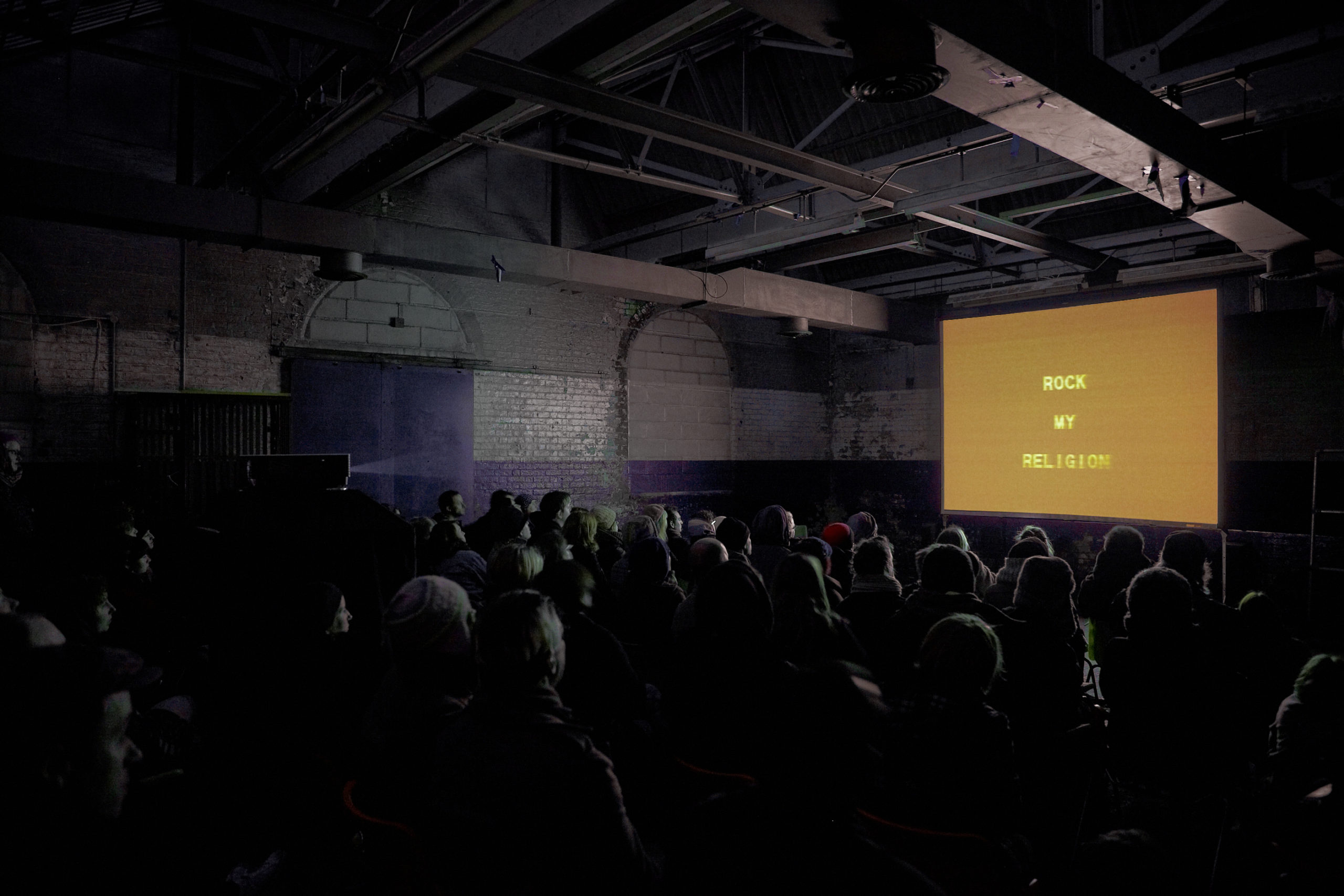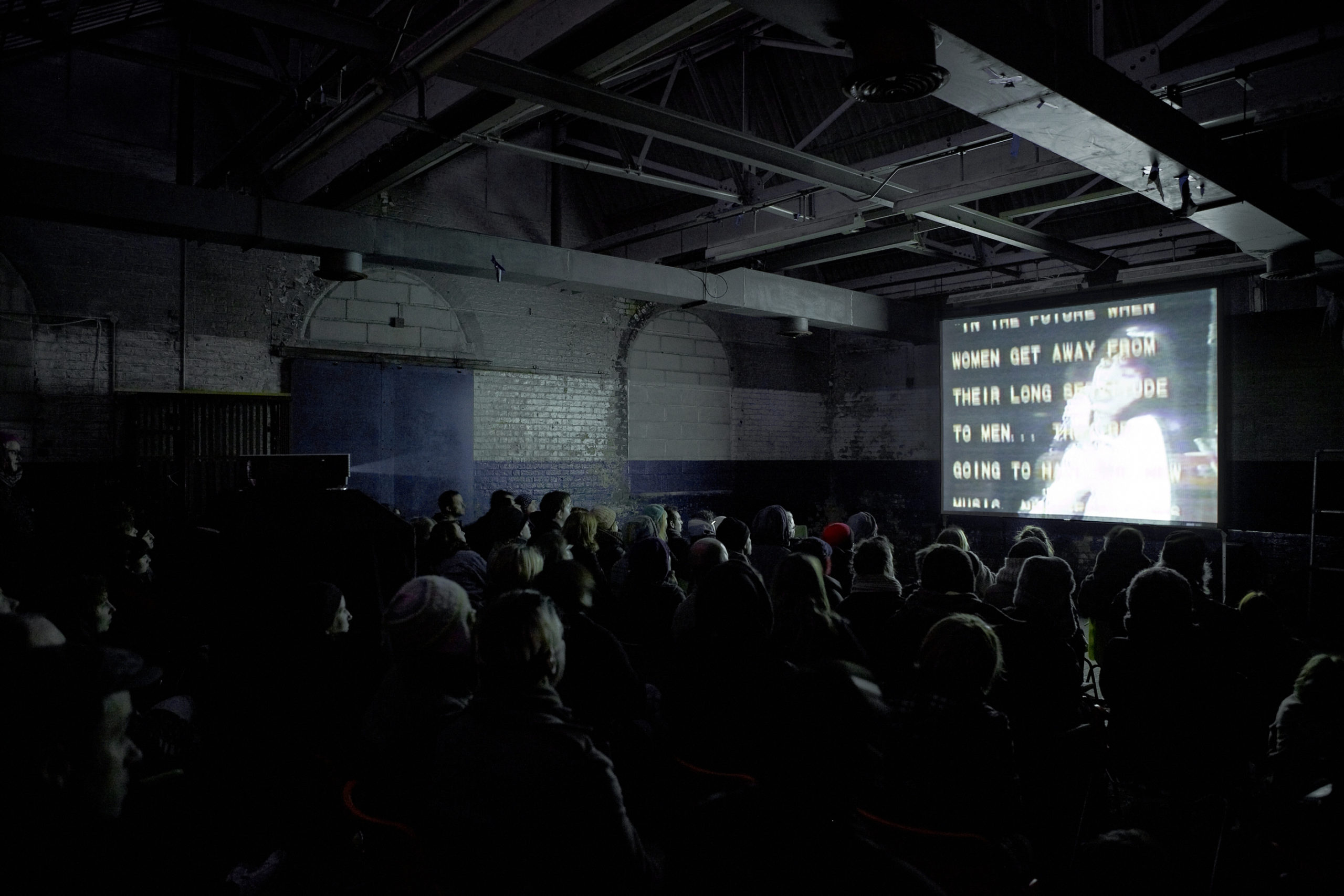Dan Graham’s artistic practice has been influenced by music from early on and this interest becomes more explicit in the late 1960s through some of his first writings such as Live Kinks (1969) a review of a concert by The Kinks. During the 70s and 80s, Graham developed close working relationships with composer Glenn Branca and musician and Sonic Youth founder Kim Gordon, who supposedly started her music career by taking part in one of Graham’s performance pieces, which didn’t quite go according to plan and turned into a fully fledged concert. Through ‘a shift towards the documentary’ as described by LA MOCA’s Bennett Simpson who recently curated a Graham retrospective, the 1980s saw the release of two video works by the artist which explicitly deal with the subject of popular music: Minor Threat (1983) on a concert of the American punk band of the same name and the more complex Rock My Religion (1982-84), developed in discussions with Branca, Gordon and Sonic Youth’s Thurston Moore, all of whom contributed to the soundtrack of the work.
In Rock My Religion, Graham traces the history of popular music in America back to the 1950s, linking it with a nineteenth-century Puritan sect, The Shakers. The bodies of the Puritan Shakers, reaching ecstasy in order to ‘overcome’ sexuality and to be closer to God, are juxtaposed with the shaking bodies of America’s pubescent teenagers, escaping their suburban prisons by immersing themselves in the sexually charged adoration of their pop idols – from Jerry Lee Lewis and Elvis to Jimmy Hendrix and Jim Morrison. For Graham, a study of popular music is intrinsically linked to an analysis of America’s political and social system constructed on the basis of a belief in the ‘American Dream’, a work ethic based on achievements of individuals and the nucleus of the traditional family. Whereas The Shakers’ aim was to create an equal society achieved through the elimination of sexual desires in the course of communal dancing, popular music allows the creation of a communal experience through the appreciation of individuals’ creative expressions. In Rock My Religion, Graham investigates the idea of a relationship between nineteenth-century industrialisation and America’s ‘suburbanisation’ in the 1950s, connecting this work to other pieces which show the artist’s continuous engagement with the semiology of suburban and urban architecture.
Rock My Religion is as much an experimental documentary as it is a theoretical discourse on American culture in the second half of the twentieth century, making this work a visual extension of Graham’s writing practice rather than linking it with his works in video art. In contrast to the ‘instantaneous presence’ experienced within closed-circuit video installations, Rock My Religion is an attempt to ‘extend time’. Linking the past with the present may be a way of accounting for popular music’s ability to occupy a space between the economy of a commercial industry and the realm of fantasies and desires. This screening will contextualise Graham’s video-essay with readings of interviews, writings and music in order to expand on the influence of music on Graham’s work and to reflect on the importance of writing as part of his artistic practice.



